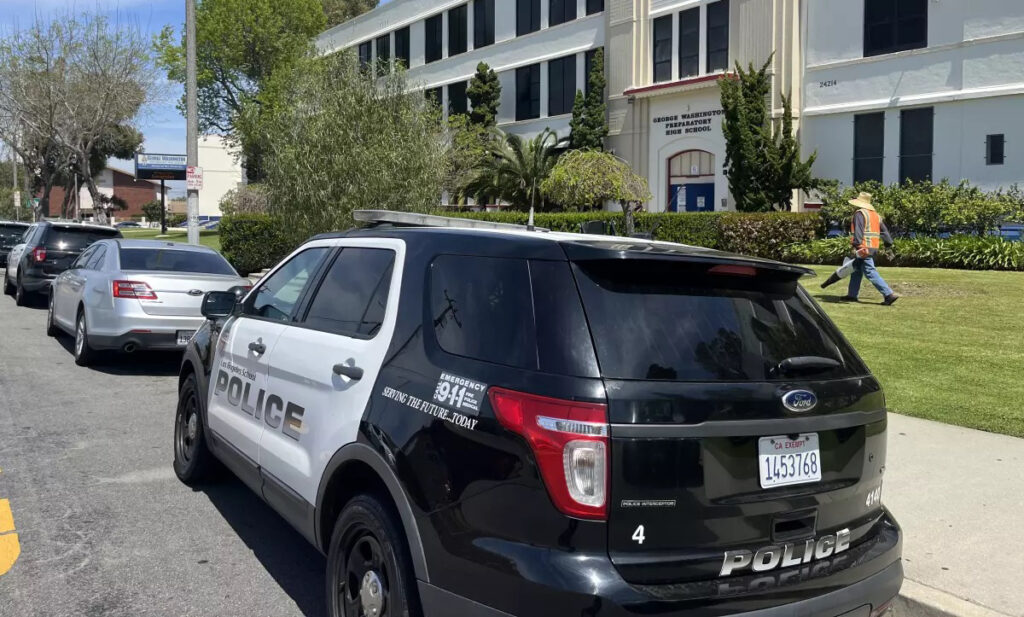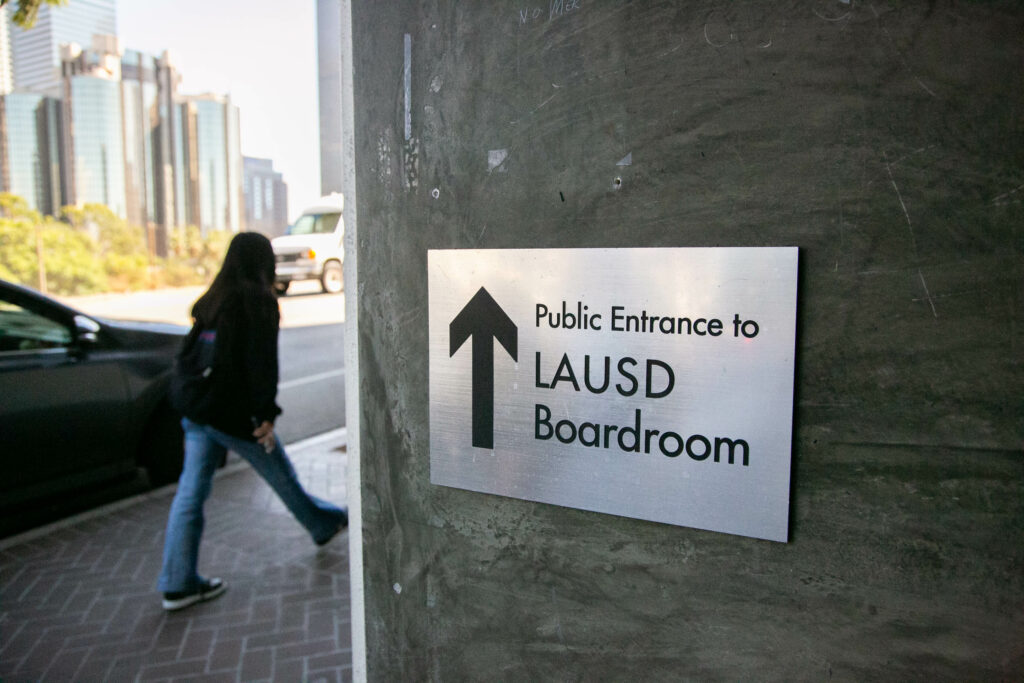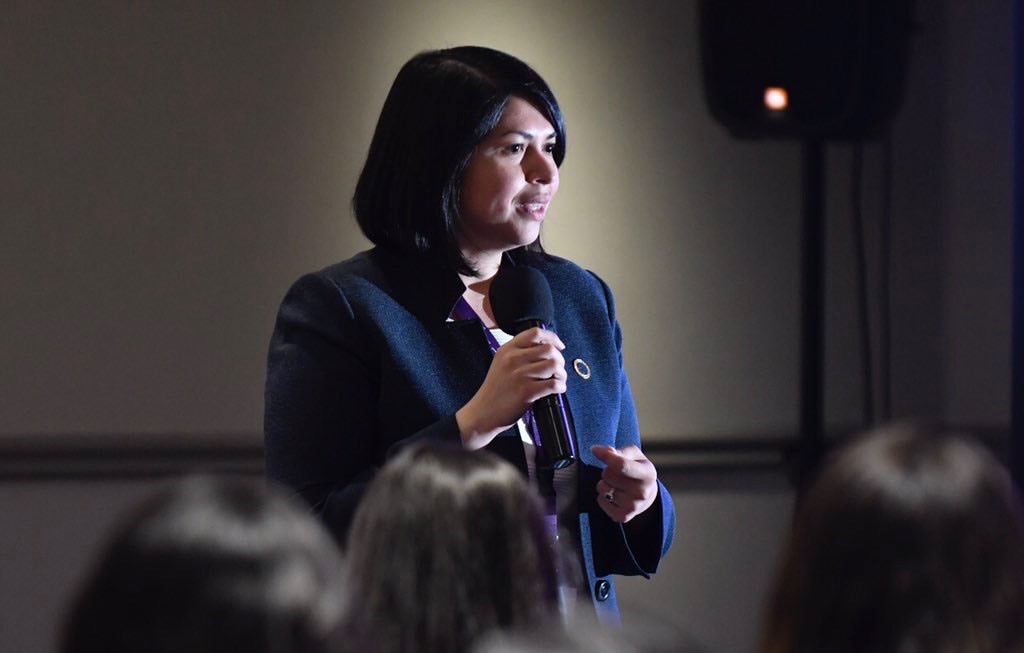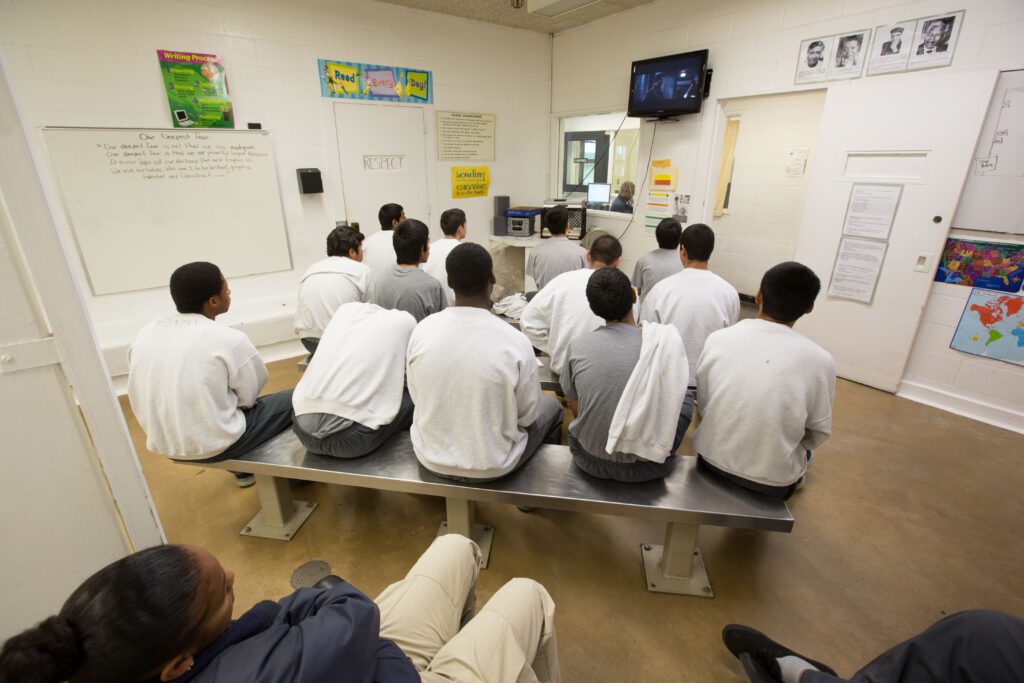Four years after removing district police from individual campuses, the Los Angeles Unified School District has temporarily restored officers to two schools — reviving longstanding debates and dissatisfaction over school policing.
Superintendent Alberto Carvalho attempted to restore officers to 20 school sites to make campuses safer, according to a May 13 memo to school board members. Those campuses were chosen based on “relevant safety data.”
“As we near the end of the school year, we continue to refine our protocols to ensure our schools are safe and welcoming environments for students and staff,” he said in the memo. “It is critical that we are aware of the specific needs of our schools, and respond accordingly.”
A day later, amid a backlash, Carvalho’s plan collapsed, with the district limiting police to only two of the 20 schools until the end of the school year because of “heightened activity” in the region: Washington Preparatory High School and Northridge Middle School. At each of the campuses, police could be stationed either all day or during specific times, including dismissal, according to an LAUSD spokesperson.
The district will decide weekly whether to keep police in place. It is unclear what the district will do next.
The district’s own data shows a 45% spike from 2017-18 to 2022-23 in incidents involving suicide risk, fighting/physical aggression, threats, illegal/controlled substances and weapons. And 25% in the year ending 2022-23.
Weapons incidents rose from 994 to 1,197 in the year ending 2022-23.
Police were restored to the two campuses after gun incidents. In one, a student died in a shooting a few blocks from Washington Prep. During that incident, a member of the Safe Passage program — which involves community members monitoring routes to and from school to keep students safe — allegedly failed to intervene.
Meanwhile, at Northridge Middle School, police came to arrest two students who had brought loaded semi-automatic handguns. Afterward, members of United Teachers Los Angeles rallied in support of student safety, alleging the district failed to issue a lockdown and did not communicate adequately. LAUSD did not respond to the union’s allegations.

“The recent uptick in interest in bringing police back to schools happened because of a few incidents on campuses,” said Amir Whitaker, senior policy counsel at the American Civil Liberties Union (ACLU) of Southern California. “And, as always, the immediate response is to bring in police — when oftentimes we know the police wouldn’t have prevented the situations in the first place.” Whitaker is also the primary author of a 2021 report titled “No Police in Schools,” which concluded police in schools have “devastating and discriminatory impacts on tens of thousands of California students.”
How LAUSD is dispatching its police is part of a continuing EdSource investigation that revealed the vast presence of police in K-12 schools in California. EdSource obtained nearly 46,000 call logs from 164 law enforcement agencies for the period January to June 2023. LAUSD’s police department refused to release its data.
The current debate over school police is part of a longstanding tug-of-war over student safety. Some community members have advocated during board meetings for more law enforcement, while others maintain that school police should be abolished altogether.
“There isn’t security on campus, and that obviously affects our children,” said Efigenia Flores, a district parent and member of Our Voice/Nuestra Voz, a group of Latino parents that has consistently advocated in meetings with district officials for an increased police presence, alongside mental health and counseling supports.
“This is unacceptable,” she added in Spanish. “That is why we want a clear and transparent plan that incorporates our voice.”
According to a recent district safety and school climate presentation, a range of safety concerns have increased across the district in recent years, leaving many parents worried about their children’s well-being and eager for the district to restore a presence on individual campuses.
Last Tuesday, a fourth grader at Glassell Park Elementary brought a loaded handgun to school. Nobody was injured, and Principal Claudia Pelayo said in a message to the campus community that the school acted immediately and asked the Los Angeles School Police Department and Region West Operations to investigate.
“In alignment with our commitment to comprehensive safety measures and as an ongoing practice, we continuously review relevant statistical data and implement enhanced on-campus support from a number of departments within our District as deemed necessary,” a district spokesperson said in a statement to EdSource.
Uneven access to community-based safety
Several community organizations, however, have maintained that law enforcement heightens fears around racial profiling and violence against students of color — and say the district has “really failed to commit to implementing” community-based safety efforts that could help tackle “root causes” of violence, according to Joseph Williams, director of Students Deserve, a community organization focused on “making Black lives matter in schools.”
Those community efforts include Safe Passage and restorative justice practices, which are designed to help students understand the impact of negative behavior and address underlying challenges that may have caused them to occur in the first place.
LAUSD spokesperson Shannon Haber maintained, however, that the district has “really leaned into our safety initiatives and restorative justice practices,” citing efforts to hire more mental health professionals and partnerships to promote safe passage, among other initiatives.
School board member Tanya Ortiz Franklin has long supported restorative practices in the district — and said the fears Black students experience around police “is not something I want to perpetuate, personally.”
“Everybody’s job in the school district is to make sure kids are safe; and, some people think only officers focus on safety,” Ortiz Franklin said in an interview with EdSource.
“Your teachers are focused on safety, your principals focus on safety, your campus aides are focused on safety — everyone understands that is our primary concern. And so, where we need to improve and grow as a system is not just with one department. It’s with everyone.”
LAUSD’s current law enforcement landscape
In 2020, in the wake of George Floyd’s murder at the hands of police in Minneapolis, LAUSD’s school board voted to cut the district’s Los Angeles School Police Department by 35% and remove police officers from all campuses.
The district’s police department saw a $25 million reduction in the 2020-21 budget, including more than $14 million in salaries and over $10 million in overtime pay, according to a Dec. 15, 2020, report by the Board of Education.
Since then, the district has adopted a “patrol model,” where an officer is assigned to patrol a neighborhood in a car, both before and after the school day.
Some officers also patrol during the evenings when there could be potential trespassing or vandalism — and they are often present during evening events, including football games, Ortiz Franklin said.
If an incident takes place on campus, she said, a school principal or designee can call the police, and the district department has a response time that ranges from three to seven minutes.
The district did not disclose how many calls were made to district police over the past several years.
“We have public education dollars to spend on teaching kids to get ready for college, career and life; and, if we choose to spend education dollars on law enforcement, that to me feels like a disservice and a missed opportunity,” Ortiz Franklin said, while emphasizing that the district anticipates “dire budget cuts” in the coming years.
With incidents on the rise since 2017-18, some parents are asking for more police in schools to keep their children safe.
“Because there is no security, this will continue: the distribution of drugs, fights, bullying and sexual harassment,” said Maria Hernandez, a mother of four LAUSD students and a member of Our Voice/Nuestra Voz.
“There are many mothers who are saddened by the deaths of their children, and I don’t think they are hoping for more,” she added, speaking in Spanish.
Evelyn Aleman, who runs Our Voice/Nuestra Voz, added that “we, as the adults, really have to step in and take charge of the safety of the students.”
She also questioned whom principals would call in an emergency if there aren’t district police at schools.
“They’re going to call LAPD. Do we want the principals doing that?”
‘A visceral response’
Venice High School senior Lindsey Weatherspoon saw a man in a blue uniform enter her classroom a couple of weeks ago. Aware of allegations that district police had targeted students of color, she panicked.
“I could just feel my heart literally beating out my chest — thinking it was wrong, and they’re conducting random searches or something,” Weatherspoon said.
Fearing police violence, she wondered: “‘Is this going to happen to me? Is this going to happen to one of my friends?”
The uniformed person entering the school turned out to be a maintenance worker, but Weatherspoon found it “mind boggling” to have “such a visceral response.”
Weatherspoon is part of the ACLU of Southern California’s Youth Liberty Squad, one of many community organizations that has called for an end to school policing altogether — whether by district or municipal law enforcement agencies.
Several students from these organizations also attend district board meetings and speak out against policing during public comment sections — claiming the district police force has disproportionately profiled and policed students of color and consistently posed a threat to their emotional safety at school.
Despite being roughly 8% of LAUSD’s population, Black students account for roughly a quarter of arrests, citations and diversions, according to a 2022 report released by the Police Free LAUSD Coalition, a group of community organizations that oppose school policing.
“Rather than arresting (students) and pushing them out of our schools, we truly need to find out the root cause of what is really going on with our youth. What is it that’s going on at home? What’s going on mentally, as well?” said Steven Ortega, the director of youth organizing at the East Los Angeles-based non-profit InnerCity Struggle.
“We’re not saying, ‘Let’s let young people get away with anything.’ We’re saying that there still needs to be accountability, but more holistically.”














